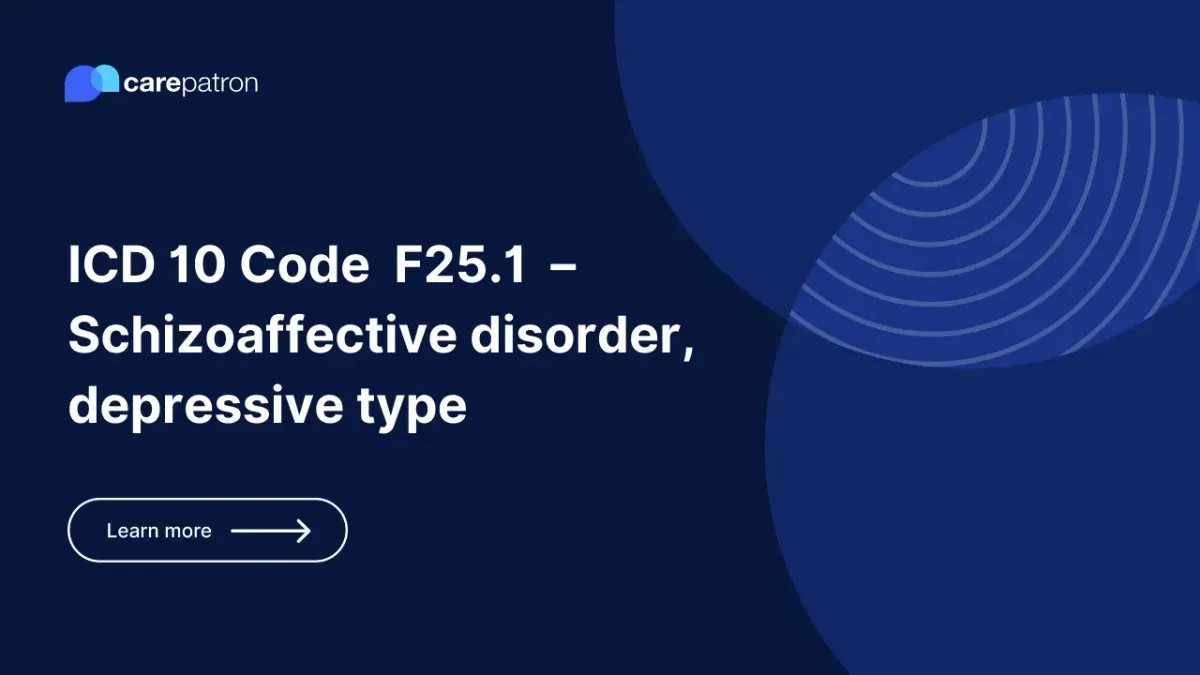
F25.1 – Schizoaffective disorder, depressive type
F25.1 is the ICD-10-CM code for Schizoaffective disorder, depressive type, a mental health condition with schizophrenia and mood disorder. Learn more here.
Use Code
EHR and practice management software
Get started for free
*No credit card required
Free
$0/usd
Unlimited clients
Telehealth
1GB of storage
Client portal text
Automated billing and online payments
